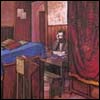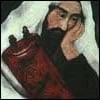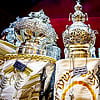Question:
I've seen the laws of the Talmud referred to in chassidic literature as "the wisdom and will of G‑d." To be honest, I don't get what's so "wise" about how to divide a garment that two people are fighting over, or why G‑d would particularly "will" the procedures for buying a donkey. Is there something here I'm missing?
Answer:
Your question is dealt with at length in the classic work, "Tanya" by Rabbi Schneur Zalman of Liadi (chapters 4 and 5). Many others before him also dealt directly with this question, from Rabbi Saadia Gaon to Maimonides to Rabbi Shimon ben Aderet to Rabbi Yehuda Loewe of Prague. However, the explanation given in the Tanya is comprehensive and deeply satisfying.
It's hard for me to do justice to what is presented there and I highly recommend you study it yourself. However, I will try to present the basic idea:
Wisdom that can only be accessed by the angels or by enlightened sages is limited wisdom. Torah is said to be G‑d's wisdom and as such must be boundless. Just as G‑d is everywhere and in all things, while at the same time entirely transcendent of all things, so His wisdom must be a wisdom that is equally accessible to a five-year-old child as to a great scholar—as long as there is a mind there to receive. Stories about two brothers fighting, rules about splitting an article of disputed ownership—these are simple matters that everyone can relate to. And yet, in the way Torah deals with them, you can find a well of infinite wisdom.
When the sages compared the Torah to water,1 Rabbi Schneur Zalman explains, they had this quality in mind: Just as water descends from the highest place to the lowest without change, so the Torah descends from its place in the highest realms to become invested in mundane, material issues so that every person can grasp it—without any essential change in that wisdom.
On careful consideration, you will note that Rabbi Schneur Zalman is shifting paradigms here. As you pointed out, deciding what should be done with a garment claimed by two litigants is not the ultimate display of G‑d's infinite wisdom. To believe such is analogous to saying, "the professor is so smart, he knows how to buy a pair of shoes." The professor's genius may be found in his solutions to differential equations, his dialog with his peers or his latest thesis. Buying shoes is something he can leave for others. With G‑d, it is infinitely more so—since His wisdom itself is infinite.
In order to discover G‑d's wisdom in the Talmud we must examine not just the content of the problem and its solution, but also the process. The content (bills of divorce, cows and donkeys, the kosher signs of animals, etc.) are simply the outer garb in which a deeper wisdom is invested. The real wisdom is to be found once we extrapolate the intellectual orientation behind those discussions—not the thoughts but the way of thinking. In fact, in your study of Talmud, you may have noted that the approach of Torah and of our sages in resolving these issues appears often peculiar, even counter-intuitive. Yet, on deeper reflection, it becomes obvious that a different form of intelligence lurks beneath the surface.
Perhaps the professor can do the same thing. Perhaps he can decide when he goes shopping to employ his skills in say, game theory, in order to buy shoes. In fact, we do this often when we employ a method called the parable.
The parable is a simple story that contains a deep wisdom. Whether it be Aesop's fables or Orwell's Animal Farm, the point of the parable is not its content—not the eating habits of wolves or the social mores of pigs—but an idea the author chose to dress up in these "clothes" to communicate a far deeper idea.
In the same way, all the halachot (laws) of the Talmud, just like the stories of the Tanach (bible), are G‑d's parables. The difference is that human parables are fantasies. When G‑d creates a parable, it actually occurs in our world. After all, our entire world is nothing but a stage for those parables.
So are the mitzvahs that we do. Just as the stories of the Tanach (bible) are crystallizations of G‑d's wisdom, so our mitzvahs are enactments of that wisdom in the physical realm. In the language of the Tanya, when we are doing a mitzvah we are enveloped within G‑d's mind and desire.
Another example: I once worked in the field of multimedia and even taught a class on retooling conventional media for the "new media." How do you take a movie and make it into a interactive game? You don't. You go back to the author's mind and begin all over again. You say, "The author wrote this story to express his sense of what the world is and how it works. If he were to express those same ideas in a game, how would he do it?"
Neither of these examples is truly satisfactory, because both of them could be read as saying that there is a deeper content behind the content. We are talking about a qualitative distinction between content and process. There is one other way of saying this, however:
Mathematics is usually taught by following a textbook. Let's say a real mathematician, one of those who generates brilliant new insights and applications in math, teaches the course. He may provide the same formulas and principles. But you won't be just learning math. You will be learning how to think like a mathematician.
Similarly, Torah is not just about "what G‑d thinks about" but also about "how to think like G‑d." G‑d can choose to think about whatever He wishes to think about. The issue is not the subject but its treatment. That's why Torah learning, as distinct from typical academic studies, is much more about process than about content. More about "how you got there" and less about "where you got to."
Over the ages, many great minds clued into this "way of thinking" and each expressed it in his own terms. In more recent times, Rabbi Chaim Soloveitchik of Brisk would reduce many of the Talmudic debates to a subject/object paradigm. Rabbi Yosef Rosen of Rogatchov demonstrated that many of the famous debates between the Talmudic sages Abbaye and Rava are debates about the nature of time—is it a series of points or a smooth continuum? Rabbi Yosef Zevin demonstrated that the school of Hillel and the school of Shammai are actually holding a single debate throughout the entire Talmud: which takes precedence, potential or actual?
Even then, these expressions are still only the outer garb. The inner garb, as we said, is something boundless with infinite forms of expression, something we can never put in a glass case and say, "This is it!" Who is to say that Rabbis Soloveitchik, Rosen or Zevin's grasp of G‑d is any greater than that of the small child? As one of my teachers expressed it, "If you have learned a section of the Talmud until everything fits in place, smoothly and cleanly—it is most certain that you've learned it wrong. How is it possible that the mind of the Creator could fit within the mind of the created?" Every grasp is both perfect and imperfect at once.
The main thing is to study the Talmud with a teacher who can open up its depths to you, to get you to ask the right questions and look beneath the surface of every answer. And at all times to keep in mind that you are not playing just another intellectual game. You are playing an endless game called, "Let's Think Like G‑d." In fact, the Tanya says, at the time of learning, your mind is not just knowing G‑d's will and wisdom—your mind becomes one with Him.








Join the Discussion